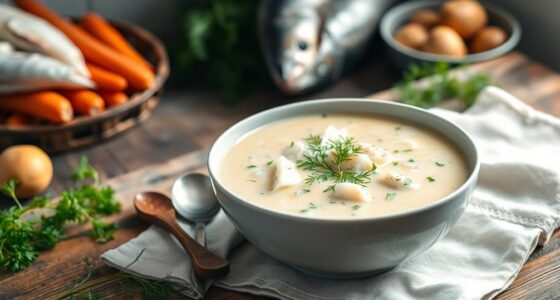Brunost is a unique Norwegian cheese made from caramelized whey, giving it a sweet, creamy flavor. It's not your typical cheese; it's produced by boiling whey, milk, and cream to create a deliciously rich treat. You can slice or melt it for various dishes, pairing well with fruits or syrups. Its cultural significance runs deep in Norway. Want to discover how to cook with it or enhance its flavor? There's plenty more to explore!
History
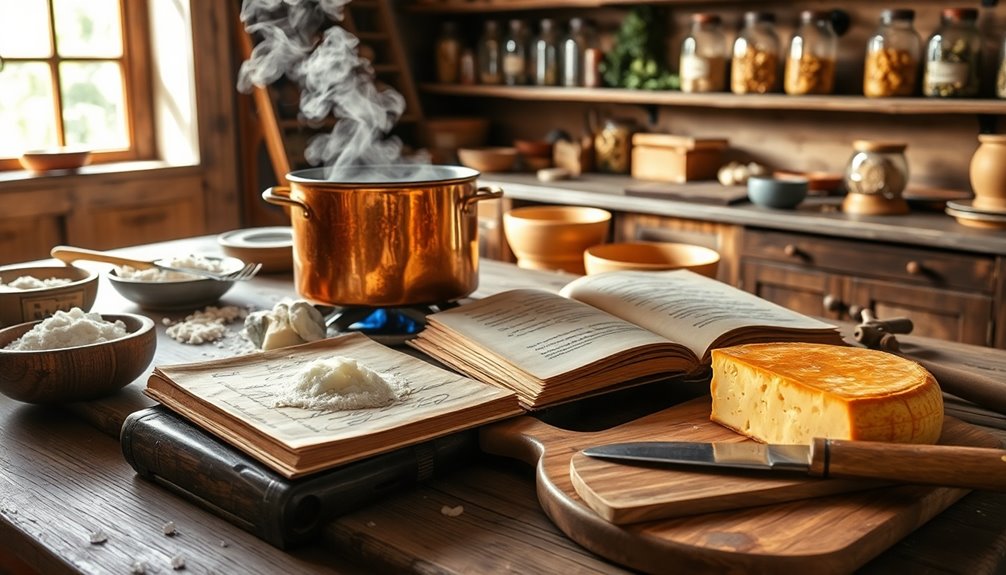
Brunost, or brown cheese, has woven itself into the fabric of Norwegian cuisine for over 300 years, evolving in production methods along the way.
Originally, this unique cheese emerged in the 19th century as a clever way to utilize leftover whey from traditional cheese-making. By boiling whey, cream, and milk, producers caramelized the sugars, creating its signature brown color and sweet flavor.
You'll find different varieties of brown cheese, like geitost, made primarily from goat's milk, showcasing regional recipes that add distinct tastes and textures.
Interestingly, brunost isn't considered "real" cheese in the conventional sense, as it's crafted from whey rather than curds, which has shaped its cultural significance in Norway.
Enjoying it offers a taste of history and tradition.
Recipe
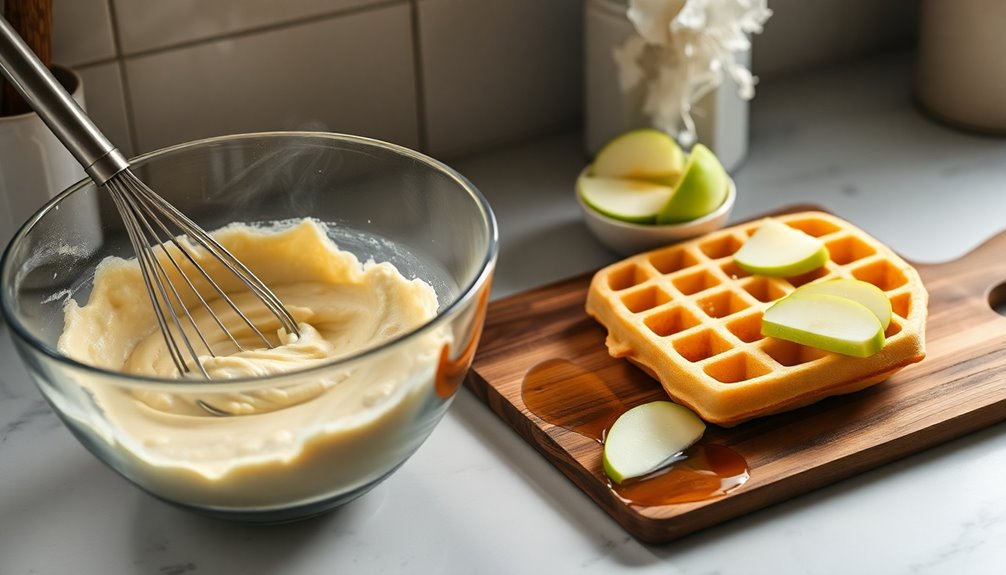
Brunost, a traditional Norwegian cheese, is known for its unique caramel-like sweetness and creamy texture. When incorporated into waffles, it transforms a simple breakfast into a delightful treat that's both satisfying and comforting.
These waffles are perfect for a cozy weekend brunch or a special occasion, particularly when topped with fresh fruits and a drizzle of syrup. The combination of brunost with the fluffy texture of the waffles creates a rich flavor profile that's sure to please everyone.
Ideal for weekend brunches or special occasions, these brunost waffles shine when topped with fresh fruits and syrup.
To make brunost waffles, you'll need to prepare your batter by blending the unique flavors of brunost with the classic waffle ingredients. This recipe balances the sweetness of the cheese with a hint of vanilla and the richness of eggs, resulting in light and fluffy waffles that melt in your mouth. Additionally, these waffles can be a great option for those looking to incorporate more nutrient-rich ingredients into their diet.
Serve them warm, topped with sliced green apples or your favorite fruit, and enjoy the delightful interplay of flavors.
Cooking Steps

To start cooking with brunost, you'll want to gather your ingredients and tools first.
Melt the cheese over low heat and stir until it reaches a smooth consistency.
After that, you can add cream and spices to enhance the flavors even more.
Step 1. Gather Ingredients and Tools
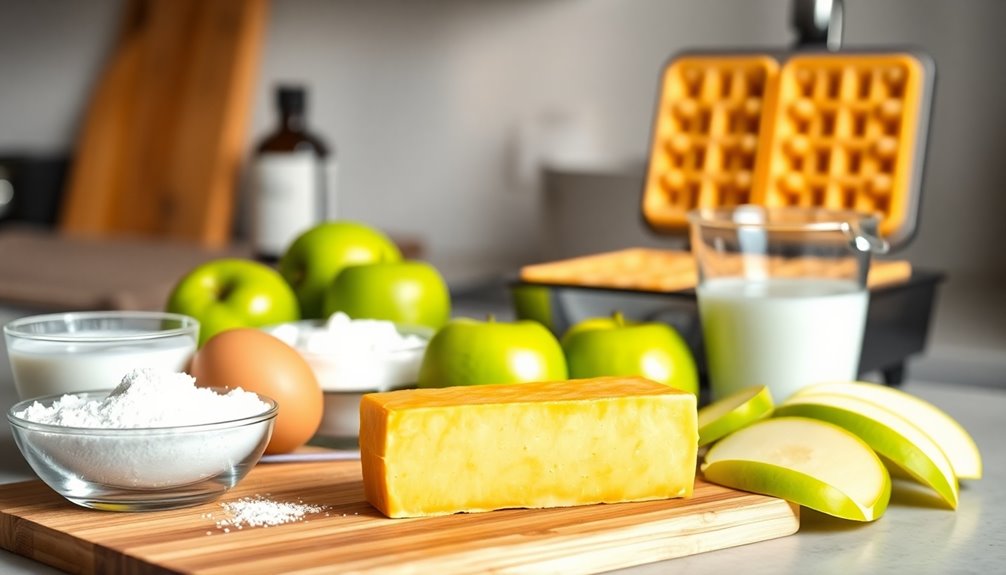
Before you dive into making Brunost, gather all the necessary ingredients and tools to ensure a smooth cooking process.
You'll need whey, which is the primary component for caramelizing, along with pasteurized goat milk, pasteurized cream, and pasteurized cow milk.
A heavy-bottomed pot is essential to prevent scorching during the long cooking time.
Don't forget a thermometer to monitor the mixture's temperature; it should reach about 116°C (240°F) for the perfect consistency.
A spatula or wooden spoon will help you stir continuously, keeping the mixture from sticking.
Finally, prepare a mold lined with parchment paper to pour the finished Brunost mixture into, allowing it to cool and set before slicing.
Happy cooking!
Step 2. Melt Cheese Over Low Heat
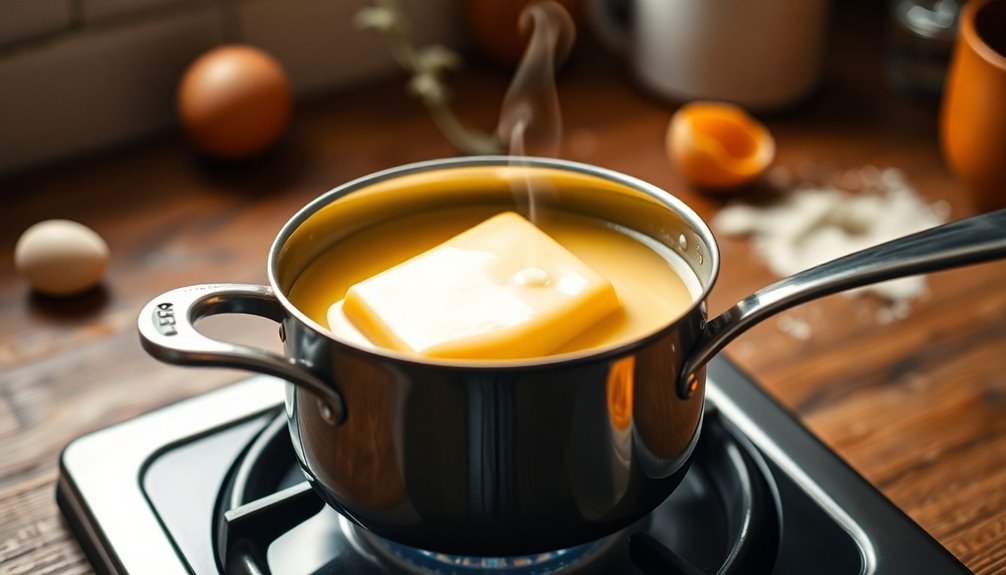
As you start melting the cheese, shred or slice the brunost into thin pieces to help it melt evenly.
Next, place the cheese in a non-stick saucepan over low heat. This prevents burning and ensures a gradual melt.
As it starts to soften, stir the cheese continuously. This will help you achieve that smooth and creamy consistency you're after.
If you want to enhance the texture, consider adding a small amount of cream or milk to keep the brunost from becoming too thick.
Once melted, the brunost can be drizzled over your favorite dishes or used as a delicious dipping sauce, offering a delightful sweet and savory flavor profile that you'll love.
Step 3. Stir Until Smooth Consistency
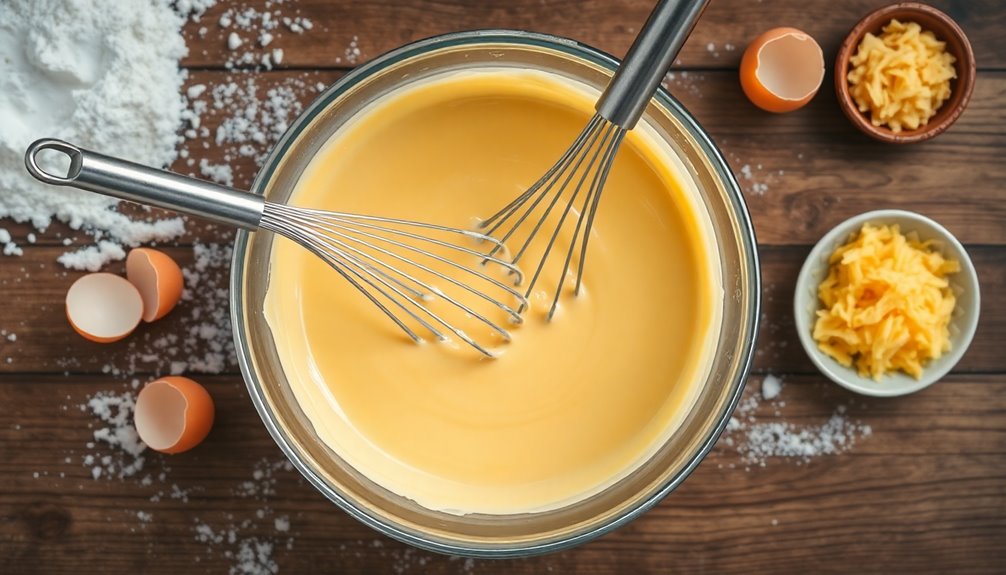
Stirring the melted brunost is key to achieving that velvety smooth consistency. Start by grating or slicing the brunost into smaller pieces; this helps it melt evenly.
Place it in a saucepan over low to medium heat, stirring continuously to prevent sticking or burning. As you melt the brunost, keep an eye on the texture. It usually takes about 5-10 minutes for it to fully integrate without lumps.
If you want an even creamier result, consider using an immersion blender after it's melted. This will help you achieve that perfect sauce or mixture you're aiming for.
Step 4. Add Cream for Richness
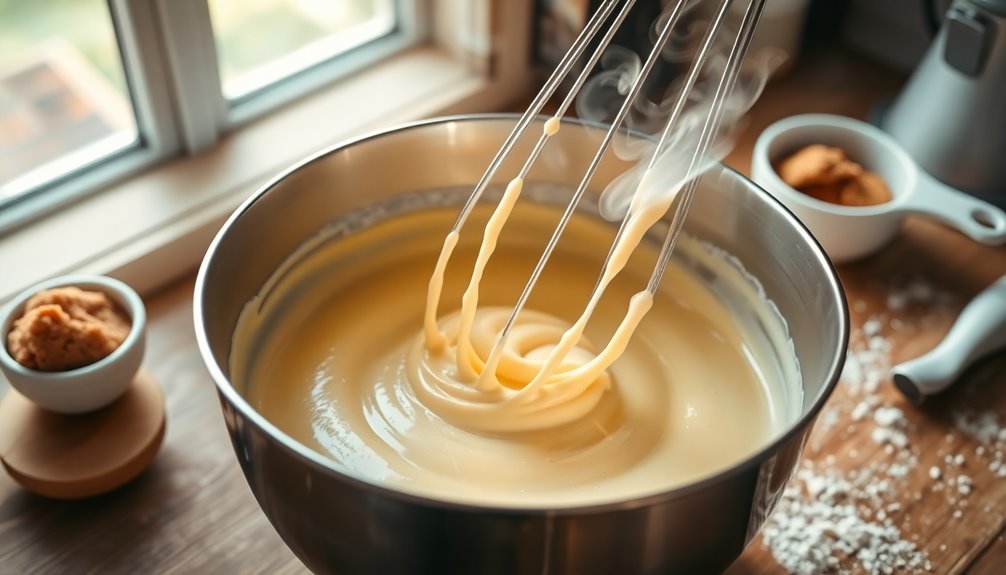
Adding cream while melting brunost transforms it into a rich, velvety delight that enhances your dish's overall flavor. To achieve this, consider using heavy cream for an indulgent taste that pairs beautifully with the sweet, caramel notes of brunost.
Gradually incorporate the cream while stirring to ensure a consistent blend, especially when making sauces or gravies. This method not only improves taste but also elevates the mouthfeel.
For a delightful dip or spread, mix melted brunost with cream and fresh herbs, allowing the flavors to meld together.
Don't hesitate to experiment with different cream types like sour cream or crème fraîche to create unique flavor profiles that further enhance the sweetness of brunost in your culinary creations.
Step 5. Incorporate Spices for Flavor
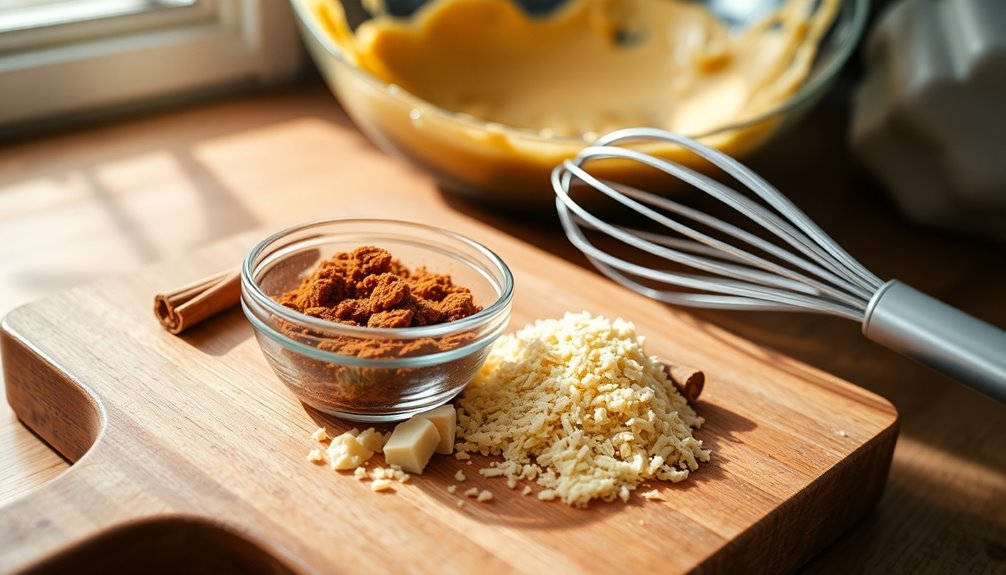
To elevate the flavor of brunost, consider incorporating spices that enhance its natural sweetness and complexity. A sprinkle of cinnamon or nutmeg beautifully complements the caramel notes of brunost, adding warmth to your dish.
If you're looking for balance, a pinch of sea salt can counteract the sweetness, especially in savory applications.
For a unique twist, mix brunost with ground black pepper to create a sweet and spicy spread that's perfect on toasted bread.
Infusing brunost with fresh herbs like thyme or rosemary adds an aromatic touch, ideal for topping roasted vegetables or meats.
For a bolder flavor, blend brunost with chili powder or smoked paprika, introducing a hint of heat to your cheese-based sauces or dips.
Final Thoughts

While exploring the rich flavors and cultural significance of brunost, it's clear that this unique cheese offers more than just a delightful taste.
Its sweet, caramel-like flavor and fudge-like texture make it a standout choice in the world of cheese. You'll appreciate how the traditional boiling process creates not just a distinctive cheese, but also a piece of Norwegian heritage.
Nutritionally, it packs a punch with high calcium and protein, although you'll want to keep an eye on the sugar content.
Enjoying brunost sliced thin on bread or paired with fruits adds to the experience.
Whether included in traditional meals or your lunch matpakke, brunost truly embodies the essence of Norwegian cuisine, making it a must-try for cheese lovers.
Frequently Asked Questions
Can You Get Brunost in the USA?
Yes, you can get Brunost in the USA! Specialty cheese shops and grocery stores like Whole Foods and Marianos often stock it.
Prices typically range from $6 to $14.99, depending on the brand and size. Popular brands like Ski Queen are available, too.
Availability might vary, so it's a good idea to check local listings or online retailers. You might also find international shipping options for authentic varieties directly from Norway.
What Flavor Is Brunost Cheese?
Imagine tasting a slice of caramelized sunshine—that's what brunost cheese brings to your palate.
Its unique flavor combines sweet and savory notes, reminiscent of butterscotch, thanks to the caramelization of milk sugars during production.
The texture is dense and fudge-like, perfect for slicing.
Depending on whether you choose cow's or goat's milk variety, you might also encounter a tangy twist, adding extra depth to this delightful cheese experience.
What Does Brunost Mean in Norwegian?
In Norwegian, "brunost" translates to "brown cheese." This name reflects its rich caramel color, which comes from the unique production process.
When you think about brunost, you'll realize it's not just a cheese but a cultural symbol in Norway. It's often enjoyed on bread or as a snack, making it a staple in many traditional meals.
How Do You Eat Brunost Cheese?
When you eat Brunost cheese, slice it wafer-thin to let its sweet and savory flavors shine.
You can enjoy it at room temperature or slightly warm to enhance its caramel-like taste.
Try it on toast or crispbread, and don't forget to pair it with fruits like green apples.
For a twist, layer it on hot toast with jam or add it to fondue for a unique sweet and savory experience.



